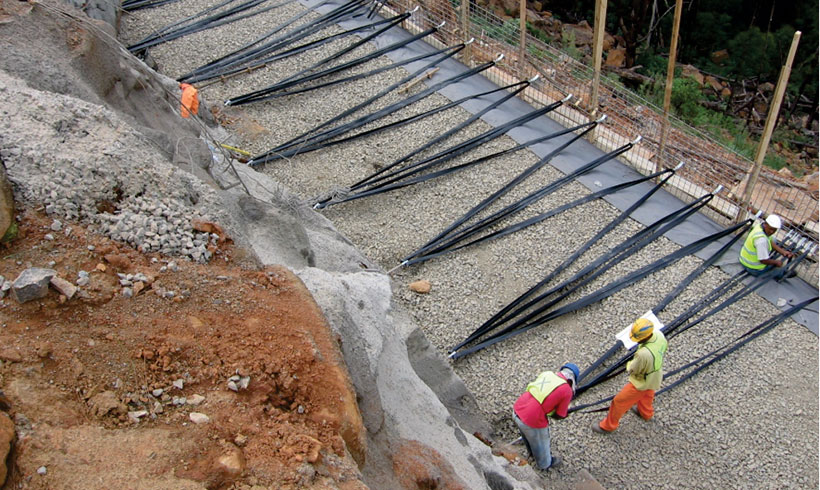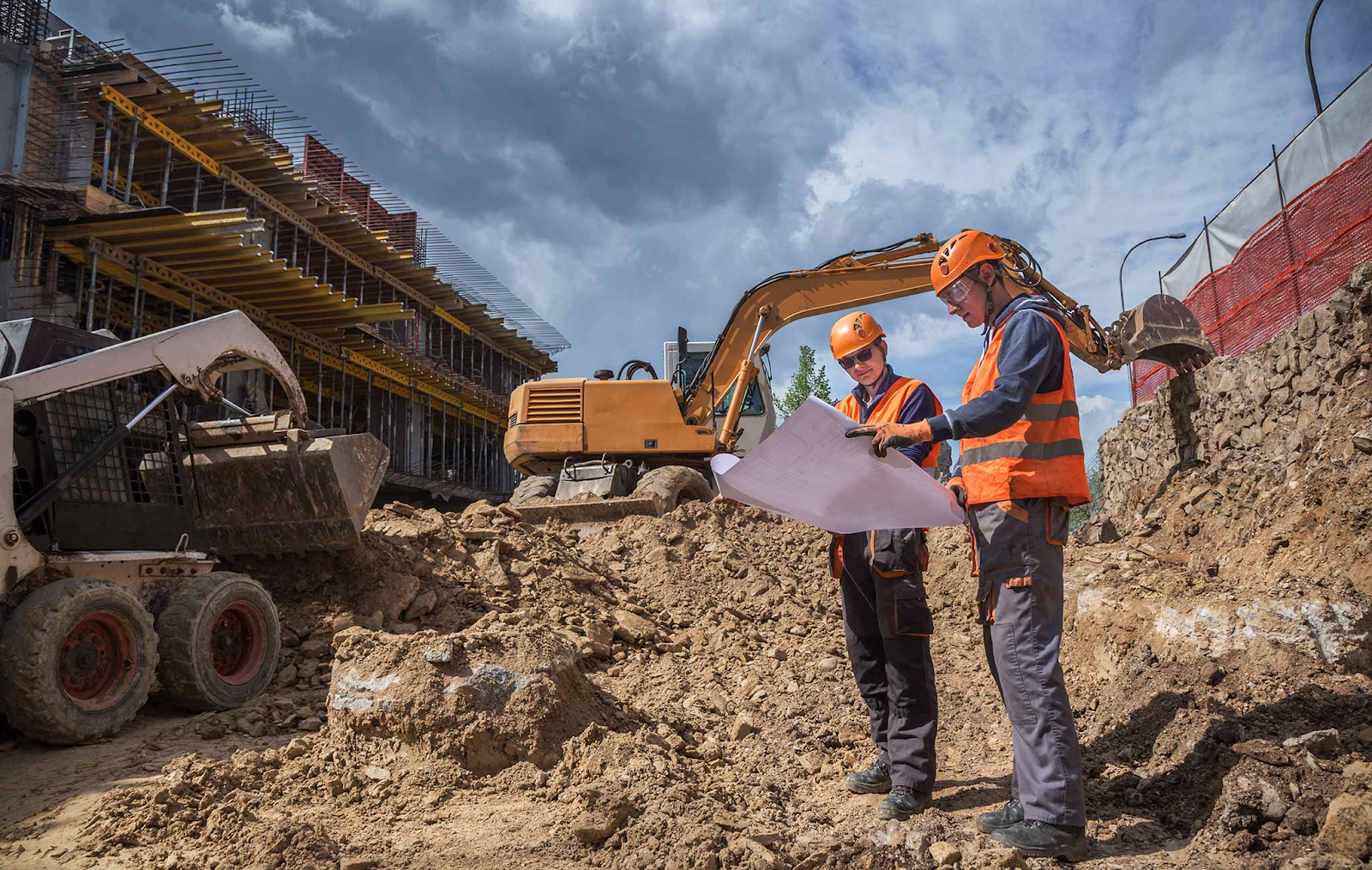10 Simple Techniques For Geotechnical Engineering For Construction Projects
10 Simple Techniques For Geotechnical Engineering For Construction Projects
Blog Article
Indicators on Geotechnical Engineering For Construction Projects You Need To Know
Table of ContentsThe Geotechnical Engineering For Construction Projects PDFsAn Unbiased View of Geotechnical Engineering For Construction ProjectsGetting My Geotechnical Engineering For Construction Projects To WorkThe Greatest Guide To Geotechnical Engineering For Construction ProjectsHow Geotechnical Engineering For Construction Projects can Save You Time, Stress, and Money.Indicators on Geotechnical Engineering For Construction Projects You Should KnowGeotechnical Engineering For Construction Projects Things To Know Before You Buy
and Kovacs, W. (1981 ), An Intro to Geotechnical Engineering, Prentice-Hall, Inc. Deep Check Technology (2023 ): Deep Scan Technology reveals concealed frameworks at the site of Denmark's highest building. "Geofrost Coring". GEOFROST. Fetched 20 November 2020. Han, Jie (2015 ). Principles and Technique of Ground Renovation. Wiley. ISBN 9781118421307. RAJU, V. R.Ground Improvement Technologies and Situation Histories. Singapore: Study Publishing Providers. p. 809. ISBN978-981-08-3124-0. Ground Renovation Principles And Applications In Asia. Pariseau, William G. (2011 ). Style evaluation in rock auto mechanics. CRC Press. Hegde, A.M. and Palsule P (Geotechnical Engineering for Construction Projects).S. (2020 ), Efficiency of Geosynthetics Reinforced Subgrade Subjected to Repetitive Vehicle Loads: Speculative and Numerical Research Studies.
Cengage Understanding, Stamford, 666 p. Atkinson, J., 2007. The mechanics of soils and foundations. Taylor & Francis, N.Y., 442 p. Floating Offshore Wind Generators: Reactions in a Sea state Pareto Ideal Styles and Economic Assessment, P. Sclavounos et al., October 2007. Nicholson, D, Tse, C and Dime, C. (1999 ). The Observational Method in ground engineering principles and applications.
Geotechnical Engineering For Construction Projects Things To Know Before You Buy
Research laboratory and field screening plays a crucial function in this procedure. By drawing out samples from the planet's subsurface and using a suite of examinations, geotechnical engineers can forecast the behavior of dirt layers and assess their viability for different building endeavours. The significance of geotechnical design in civil engineering can not be overemphasized, attributable to a number of factors: The first step in any type of geotechnical study entails identifying the dirt type at the building site.
The foundation acts as the bedrock of any type of building and construction project. Selecting the proper foundation type is a decision that hinges on the detailed analysis supplied by geotechnical design.

Geotechnical site investigation is a crucial action in the preparation and implementation of any building task. It includes the collection and evaluation of data connected to the physical residential properties of soil and rock beneath a recommended building website. This info is essential for the style and construction of secure, secure, and lasting structures.
Geotechnical Engineering For Construction Projects for Dummies
, additionally recognized as subsurface exploration, involves a collection of activities aimed at establishing the soil, rock, and groundwater conditions at a construction website. The main objectives are to identify prospective geotechnical threats, examine the design residential or commercial properties of subsurface materials, and offer referrals for the style and building of foundations, maintaining walls, and various other frameworks.
The desk study helps in identifying potential geotechnical concerns and preparing the subsequent fieldwork. This involves observing the topography, water drainage patterns, existing frameworks, vegetation, and any signs of instability or erosion.
Our Geotechnical Engineering For Construction Projects Ideas
Superficial examination pits are excavated to straight observe and sample the dirt and rock. This approach works for examining the top layers of the subsurface and determining near-surface dangers. Non-invasive geophysical methods, such as seismic refraction, ground-penetrating radar (GPR), and electric resistivity tomography (ERT), are utilized to map subsurface problems and detect anomalies.
Soil and rock examples accumulated throughout the area investigation are subjected to lab screening to establish their physical and mechanical buildings. These tests supply essential data for geotechnical analysis and layout.
The primary benefit of geotechnical site investigation is making certain the safety and stability of structures. By comprehending the subsurface problems, designers can develop structures and various other architectural components that can withstand the loads and ecological pressures they will certainly be subjected to. This reduces the danger of negotiation, decrease, and architectural failing.
The 5-Minute Rule for Geotechnical Engineering For Construction Projects
This ensures effective and safe building and construction methods. Geotechnical site investigations are typically needed by developing codes and policies.
This details is invaluable for job managers, engineers, and contractors in establishing practical routines, spending plans, and backup plans. Geotechnical Engineering for Construction Projects. Skyscraper in a Coastal AreaIn a coastal city, a skyscraper residential structure was intended on a site with believed loosened sand deposits and a high water table. A detailed geotechnical examination, consisting of borehole boring, CPT, and geophysical studies, was carried out
About Geotechnical Engineering For Construction Projects
Based on these searchings for, the foundation style was customized to consist of deep stack foundations expanding into steady strata, and ground enhancement strategies, such as vibro-compaction, were applied to minimize liquefaction dangers. This aggressive approach made certain the security and stability of the structure while staying clear of pricey post-construction remediation. Facilities Advancement on a Sloping TerrainA major infrastructure task, entailing the building and construction of a freeway and bridges, was intended on an uneven terrain with high slopes.

The Leaning Tower of Pisa (Italy), a renowned building marvel, is infamous for its explanation unintended tilt from substantial geotechnical problems. The tower's structure was improperly developed to handle the soft, unpredictable soil beneath it, bring about unequal settlement and its distinct lean. Our world is dotted with remarkable framework projectsfrom towering skyscrapers to stretching bridgesall standing testimony to the look what i found development of the different construction devices and methods offered.
Geotechnical engineering is a customized area within civil design that focuses on examining the habits of planet products. This branch dives deep into the groundinvestigating how the soil, rock, and groundwater at a building website can influenceand be influenced bythe infrastructure that we put up on and right into them. Prior to a solitary brick is laid or a concrete foundation put, geotechnical designers probe right into the earthgathering crucial data about the website's dirt composition, rock framework, and groundwater levels.
Things about Geotechnical Engineering For Construction Projects

is a tool made use of to analyze the integrity and load-bearing capacity of piles during setup, leveraging the concept of wave propagation. It optimizes building efficiency by offering real-time examinations, hence ensuring safe and efficient heap foundations. One of the useful applications of geotechnical design entails deciding and performing the best techniques for structure construction.
Pile driving represents more than the mere act of inserting architectural components right into the ground. On the other hand, it is a carefully orchestrated process of moving a read framework's tons past the less stable soil layers closer to the surfacedown to the much more considerable strata that lie beneath. When it comes to pile driving, consider how geotechnical designers adeptly utilize this technique to equally distribute the structure's weight.
Report this page